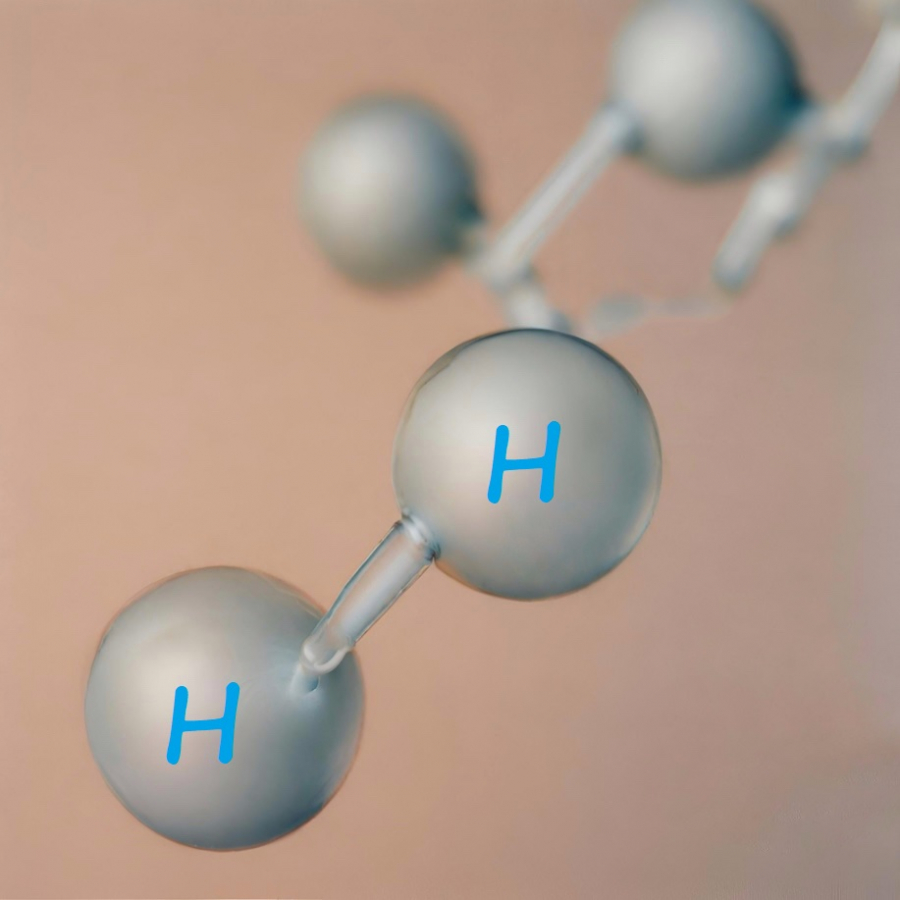Learn More > Safety Valves for Hydrogen
Safety Valves for Hydrogen
Hydrogen as a new source of energy
The energy field is currently facing significant challenges on its path to adopt sustainable resources for energy generation. Hydrogen emerges as a promising solution, produced through innovative processes and harnessing renewable energy sources.
Currently, over 600 billion cubic meters of hydrogen are produced annually worldwide for industry processes. Hydrogen is a fundamental raw material in many industries, including sectors such as refineries, ammonia production, and other chemical processes. Technology to use hydrogen as an energy source in internal combustion engines or through fuel cells is ready to replace petroleum products in the future. The undeniable advantages of hydrogen as an energy carrier, such as CO2 neutrality, flexible energy storage, and multiple applications in Power to X systems, consolidate its role in the era of sustainable energy.
Despite hydrogen's colourless, odourless, and non-toxic nature, its characteristics of volatility, high flammability, and rapid combustion speed present challenges in safe production, transportation, storage, and use in various applications and environments.
Green Hydrogen Drives the Transition to a Sustainable Energy Future
In the context of a world increasingly moving towards a low-carbon future, hydrogen emerges as a fundamental driving force in revolutionizing industrial fields, decarbonizing key segments, and creating a sustainable energy ecosystem. This energy source stands out as a clear and sustainable alternative to grey hydrogen, derived from natural gas or methane, and blue hydrogen, which incorporates carbon capture and storage.
Green hydrogen plays a crucial role in the ongoing effort to decarbonize traditionally complex sectors such as heavy industry, transportation, and heating. Its adoption promises a seamless transition away from fossil fuels, significantly contributing to reducing the carbon footprint and implementing global initiatives to mitigate climate change.

Synergies between renewable energies and hydrogen production
Advancements in solar and wind technologies, combined with synergies between renewables and hydrogen production, are becoming increasingly compelling. Surplus energy generated during peak periods can be utilized for electrolysis, ensuring a constant and renewable supply of hydrogen. While international collaborations and substantial investments define the future of hydrogen, it is essential to recognize the final mechanical obstacle in the safety chain: safety valves.
Safety and Hydrogen: Key Considerations for Safety Valves
Safety valves play a crucial role in industrial contexts related to hydrogen application. These devices are designed to open when pressure reaches a predetermined threshold, allowing controlled release of hydrogen. Safety valves prevent pressure buildup beyond set limits, ensuring the integrity of the system.
Particularly relevant in critically sensitive contexts such as those related to hydrogen, safety valves are designed to respond promptly to emergency situations. In the presence of sudden pressure spikes, caused by malfunctions or other factors, safety valves come into action, executing an instantaneous release of excess pressure. This rapid mechanical response not only protects equipment from potential damage but also helps mitigate risks associated with systemic failures, ensuring a safe and reliable scientific environment in hydrogen utilization.
Safety Valve Materials
In a constantly evolving industrial landscape, precision in selecting materials for safety valves is of primary importance. Material selection is influenced by anticipated stresses such as pressure, tension, and temperature. Stainless steel, with its variants and alloys, is at the centre of considerations. The presence of chromium and nickel is crucial to ensure compatibility with hydrogen, reducing the likelihood of hydrogen embrittlement.
A relevant example is the use of stainless steels with high nickel content, strategically chosen to counter hydrogen embrittlement. Such embrittlement occurs when atomic hydrogen infiltrates the material (inclusion), causing brittleness on active metal surfaces, especially in situations of plastic deformation. Nuova General Instruments high-pressure safety valves for hydrogen use are indeed made of AISI316L with the characteristics described above.
Accurate material selection for safety valves is essential to ensure structural integrity and equipment safety. Hydrogen embrittlement underscores the need for materials capable of withstanding challenges induced by hydrogen, such as austenitic steels with a nickel content exceeding 10%.
Safety Valve Seals
The effectiveness of a safety valve seal depends on various factors, including compatibility with metallic materials, pressure, temperature, and the ability to resist hydrogen permeation and diffusion. Adherence to specific standards is essential for seals; these must be carefully manufactured and subjected to specialized testing to resist internal hydrogen permeation, ensuring reliability and resilience in demanding operating environments.
Production Process and Certifications
Adopting high cleanliness standards during the production process of safety valves is crucial. Although specific approvals for hydrogen are not available yet, it is advisable to use safety valves with type approvals from recognized notified body such as ASME, PED, UKCA, EAC, SELO, and others.

Conclusions
With hydrogen-related projects on the rise, pressures on safety valves are increasing. Pressures that were once considered typical now require valves capable of handling much higher loads. Nuova General Instruments is adapting its technologies to design safety valves capable of meeting higher pressure limits, ensuring the protection of system components even at pressures up to 600 bar (8702 psi) and with plans to extend even beyond this limit.
The future of hydrogen brings immense promises as a key to a sustainable and decarbonized energy future. Technological advancements, cost reductions, and intensified global collaborations mark hydrogen's transition from a niche solution to a common energy vector. Its contribution to combating climate change, promoting energy independence, and accelerating economic growth makes hydrogen a beacon of hope for a cleaner and more sustainable tomorrow.